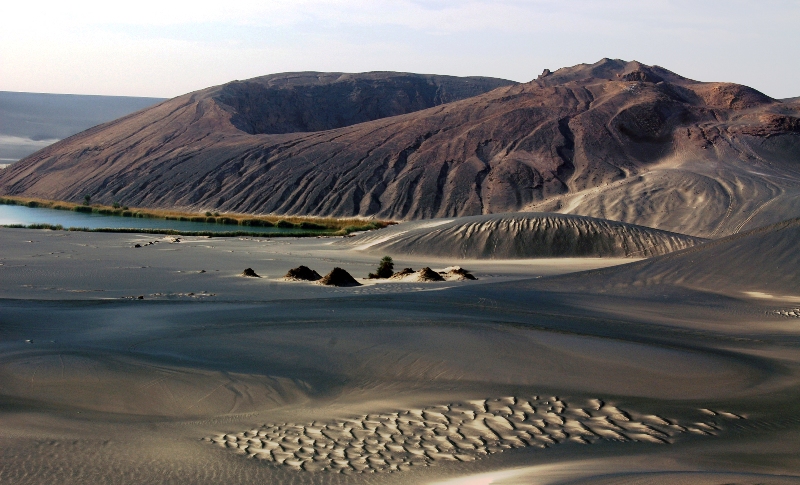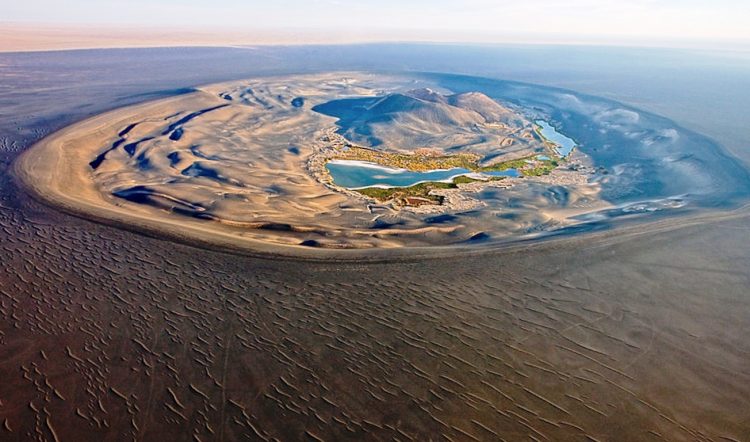Waw an Namus is an extinct volcanic crater situated in one of the remotest destinations in Libya, deep in the Sahara desert, almost at its geographic center. The stunning Waw an-Namus volcanic field is about 4 kilometers wide, surrounded by a 10 to 20-kilometer wide dark-black deposit of ash that stands out starkly against the yellowish desert. On the floor of the caldera, there is a 120-meter-high cinder cone, the apparent source of the ash, as well as three little salty, colored lakes.
The so-called name “Waw an-Namus” means the “Oasis of Mosquitoes”, or “The Crater of the Mosquitoes”, from the fact that the surrounding undersized lakes are infested with mosquitoes, and as a result camping nearby requires nets or repellents. In the last two decades. A general phenomenon in the Sahara is the occurrence of practically potable water close to, and at nearly the same elevation as, salt lakes.
This scarce supply of water feeds the lakes and was also used by travelers in the older days. Due to the existence of fresh water at this remote volcano, the mind-blowing Waw An-Namus was always a vital watering point for the caravans en route from Waw Al-Kabir to Rebiana and Al Kufrah oases further southeast in Libya. Waw An-Namus has become one of the foremost destinations for the majority of tourists who visit the Libyan desert in general and the Fezzan region in particular.
The picturesque volcano was first reported to the outside world by Karl Moritz von Beurmann in 1862 and then Gerard Rohlfs in 1881. However, they never visited the site. Most likely the first European to visit this volcano and report it was a Frenchman, Laurent Lapierre in 1920.
Lapierre was a military officer who was captured in combat and taken in captivity to Kufra via Waw Al-Kabir and Waw An-Namus, and so had the chance to report his adventure after his release a few years later. About 11 years later, an Italian geologist, Ardito Desio, reached beautiful Waw An-Namus during his famed long camel journey.
On his geological expedition, Desio also visited Jalu, Maradah, Waw Al-Kabir, Tmassah, and Kufra and published a geological description of the volcano for the first time in 1935. After the 2nd World War, numerous scientists visited the volcano, as well as the geographer Nikolaus Benjamin Richter, who undertook a number of trips to the volcano and published a book on his journey to the area in 1960.
Since that time, and as the Libyan government started awarding petroleum concessions in Libya, several geologists, geophysicists, and tourists have visited this amazing Waw An-Namus, either to explore the nearby areas or because they were attracted by descriptions of the volcano.









